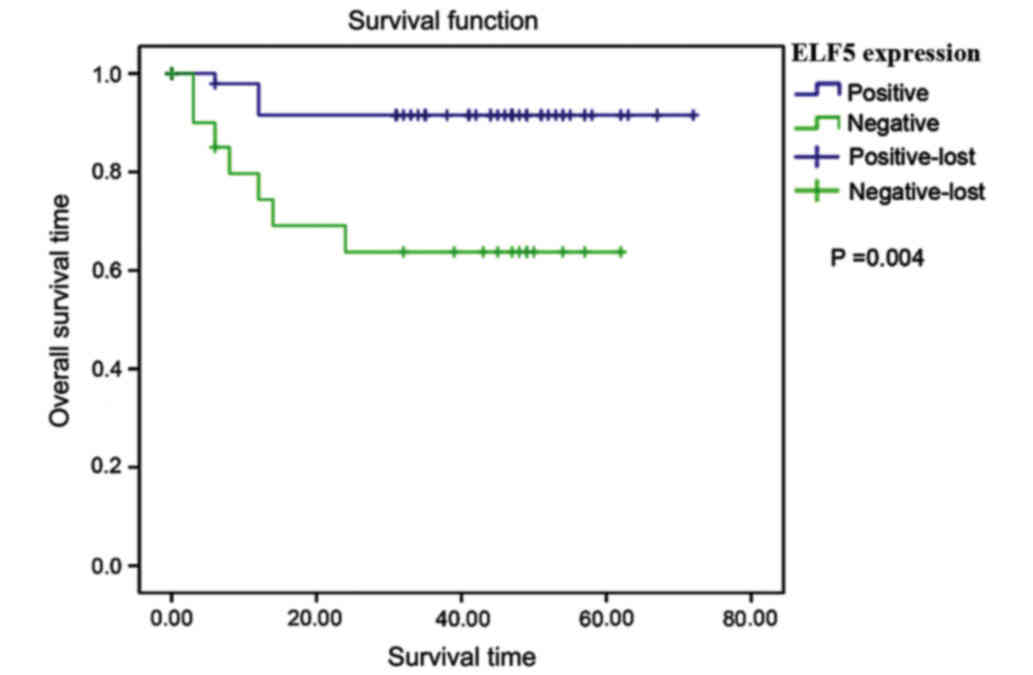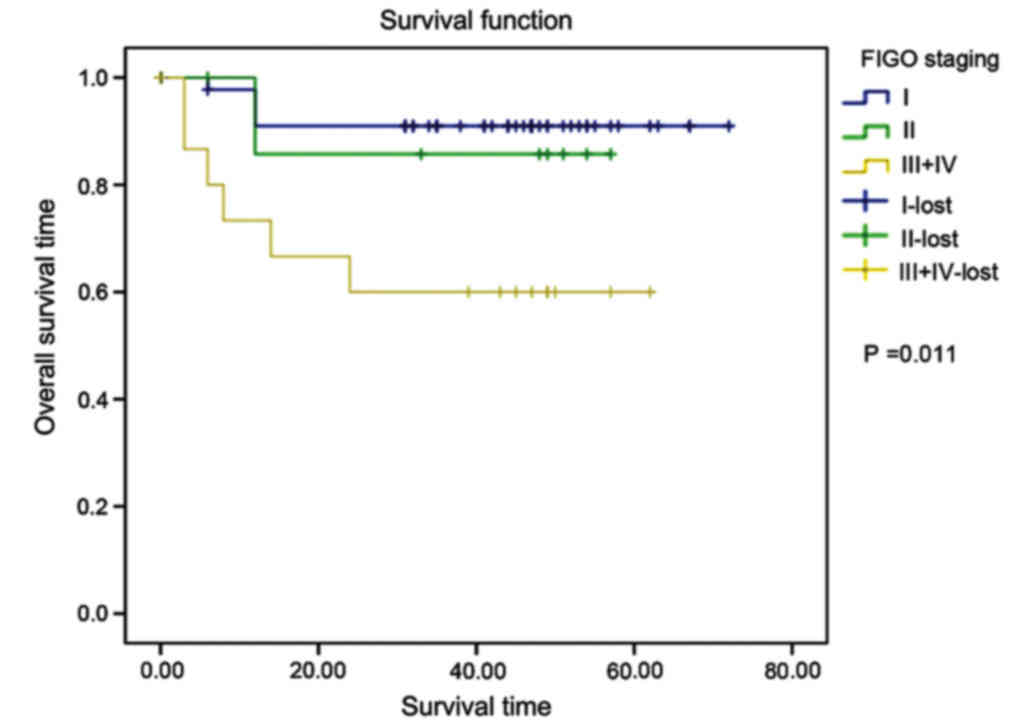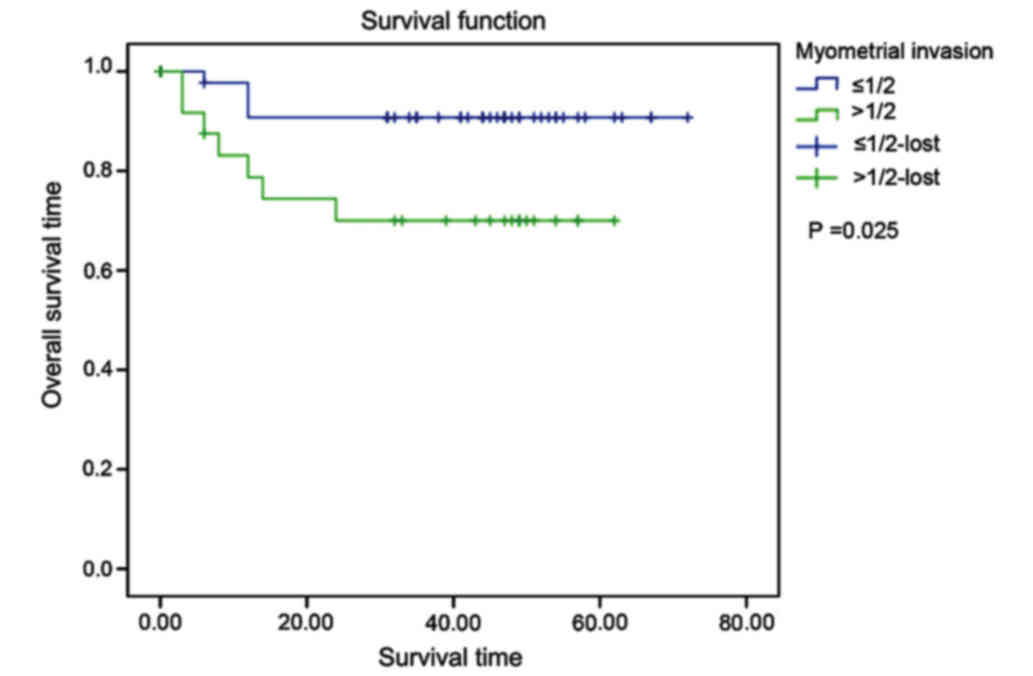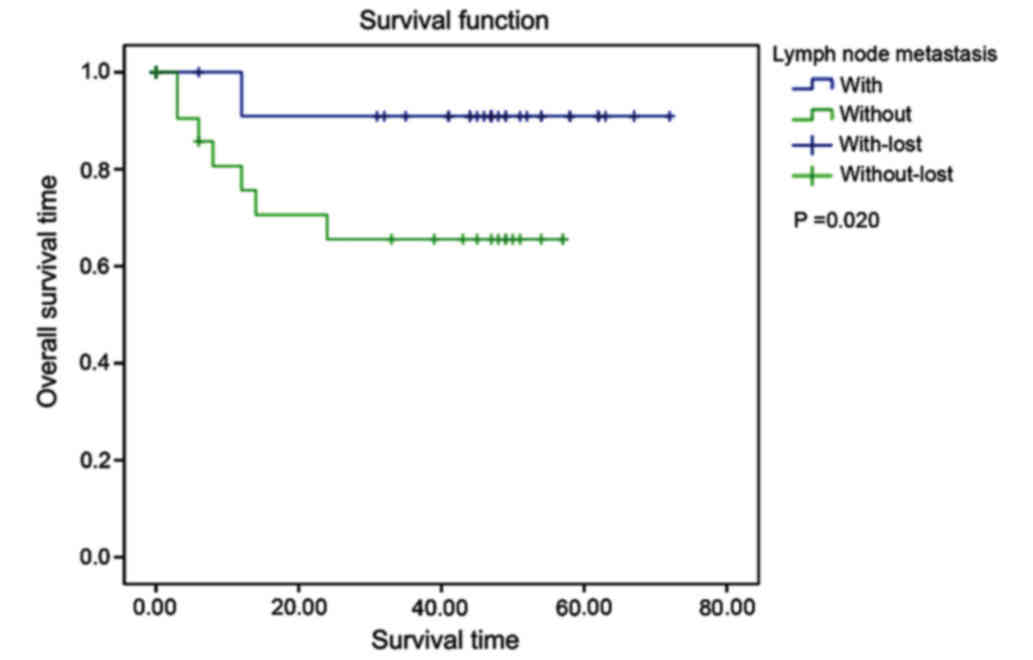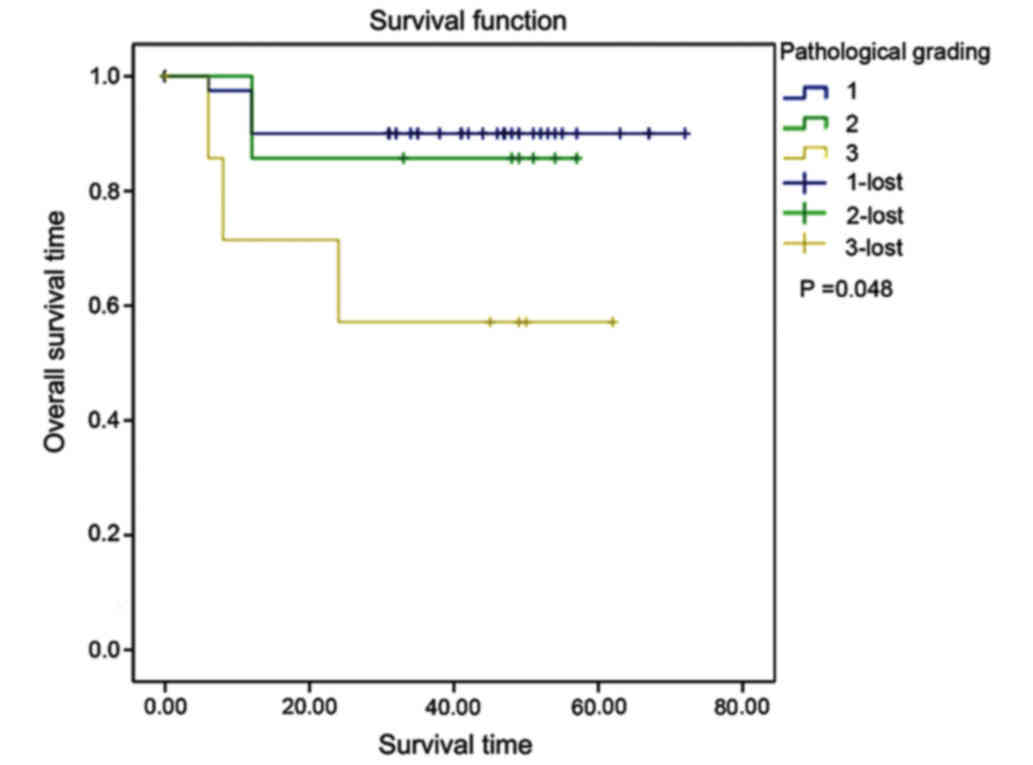Expression of ELF5 in endometrial carcinoma tissues and its clinical significance
- Authors:
- Published online on: July 5, 2018 https://doi.org/10.3892/ol.2018.9093
- Pages: 3473-3480
Metrics: Total
Views: 0 (Spandidos Publications: | PMC Statistics: )
Total PDF Downloads: 0 (Spandidos Publications: | PMC Statistics: )
Abstract
Expression of E74-like factor 5 (ELF5) in endometrial carcinoma tissues and its clinical significance were investigated. Eighty-four endometrial carcinoma tissues, 30 cases of atypical hyperplasia of endometrium and 30 cases of normal endometrial tissues were selected. Immunohistochemical method was utilized to detect the expression of ELF5 in different endometrial tissues. Moreover, its correlation with clinical pathological indexes of patients with endometrial carcinoma was analyzed. The postoperative follow-up was conducted in all the patients with endometrial carcinoma until June 30th, 2017. The Kaplan-Meier method was used for survival analysis so as to analyze the association of ELF5 expression level with clinical pathological indexes; Cox's proportional hazards regression model was utilized for univariate and multivariate analyses to screen independent risk factors for prognosis of endometrial carcinoma. In normal endometrial tissues, atypical hyperplasia and endometrial carcinoma tissues, the positive expression rates of ELF5 showed a decreased tendency (P=0.016). The positive expression rate of ELF5 in endometrial carcinoma tissues was lower in comparison to normal endometrial tissues (P=0.016). The expression of ELF5 was in accordance with the International Federation of Gynecology and Obstetrics (FIGO) staging of endometrial carcinoma (P<0.05), pathological grading (P<0.05), pathological typing (P=0.001), state of lymph node metastasis (P<0.05) and depth of myometrial invasion (P<0.05). Kaplan-Meier method for survival analysis showed that the average survival time of patients with negative ELF5 expression was shorter in comparison to the patients with positive expression (P=0.004). FIGO staging (P=0.004), pathological grading (P=0.048), depth of myometrial invasion (P=0.024) and lymph node metastasis (P=0.020) were related to the prognosis of patients with endometrial carcinoma, The univariate Cox's regression model analysis indicated that FIGO staging (P=0.010), pathological grading (P=0.040), depth of myometrial invasion (P=0.037), lymph node metastasis (P=0.029) and ELF5 (P=0.010) were associated with the prognosis of patients with endometrial carcinoma. Further, multivariate analysis revealed that ELF5 was an independent risk factor for prognosis of patients with endometrial carcinoma (P=0.035). The expression of ELF5 has a correlation with the occurrence, development and prognosis of endometrial carcinoma.




